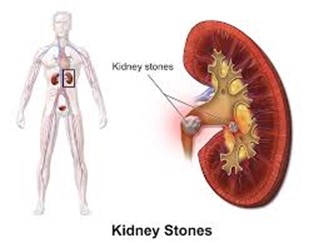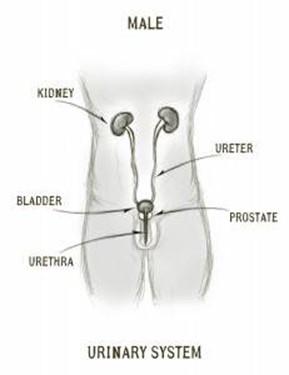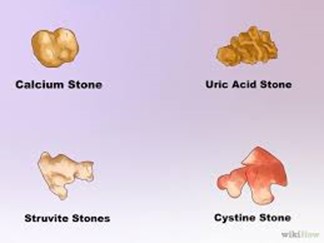From our friends at doomandbloom
I recently had a case of Kidney Stones and wanted to share this care information as I “know” how it feels.
The human kidney has a tendency, in some people, to develop an accumulation of crystals. These crystals form masses known as “kidney stones“. Some are large and some are as small as grains of sand, but any size can cause pain (sometimes excruciating).
Kidney stones are most commonly seen in those persons who fail to keep themselves well hydrated. Even small stones can lead to significant pain (known as “renal colic“), and the larger ones can cause blockages that can disrupt the function of the organ. Once you have had a kidney stone, it is likely you will get them again at one point or another. Kidney stones are usually NOT associated with infections.
Once formed in the kidney, stones usually do not cause symptoms until they begin to move down the tubes which connect the kidneys to the bladder (the “ureters“). When this happens, the stones can block the flow of urine. This causes swelling of the kidney affected as well as significant pain. Kidney stones as small as grains of sand may reach the bladder without incident and then cause pain as they attempt to pass through the tube that goes from the bladder to the outside (the “urethra“).
There are several different types of kidney stones:
• Calcium stones: The most common, they occur more often in men than in women, usually in those 20 to 40 years old. Calcium can combine with other substances, such as oxalate, phosphate, or carbonate to form a stone.
• Cysteine stones: These form in people who have “cysteinuria“, a condition that tends to run in families.
• Struvite stones: This variety is mostly found in women and can grow quite large; they can cause blockages at any point in the urinary tract. Frequent and chronic infections are a risk factor.
• Uric acid stones: More common in men than in women, these stones are associated with conditions such as gout.
To diagnose a kidney stone, look for pain that starts suddenly and comes and goes. Pain is commonly felt on the side of the back (the “flank”). Lightly pounding on the right and left flank at the level of the lowest rib will cause significant pain in patients with kidney stones or kidney infections. As the stone moves, so will the pain; it will travel down the abdomen and could settle in the groin or even the urethral area.
Other symptoms of renal stones can include:
• Bloody urine
• Fever and chills
• Nausea and vomiting
Some dietary changes may prevent the formation of kidney stones, especially if they are made of calcium. Avoid foods such as:
• Spinach
• Rhubarb
• Beets,
• Parsley
• Sorrel, and
• Chocolate
Also, decreasing dairy intake will restrict the amount of calcium available for stone formation. This will keep them as small as possible and, therefore, easier to pass.
Your treatment goal as medical provider is to assist the stone to pass through the system quickly. Have your patient drink at least 8 glasses of water per day to produce a large amount of urine. The flow will help move the stone along. Cranberry juice is very helpful, as well. One advantage is that it does not deplete the body of potassium, which may occur with prescribed diuretics such as Furosemide (Lasix) and Hydrochlorthiazide (HCTZ).
Pain relievers can help control the pain of passing the stones (renal colic). For most pain, Ibuprofen will be the available treatment of choice. Stronger pain medications, if you can get them, may be necessary for severe cases.
Some of the larger stones will be chronic issues, as the technology and surgical options used to remove these may not be available in an off-the-grid scenario. Medications specific to the type of stone may be helpful:
• Allopurinol (prescription medicine for uric acid stones and gout).
• Antibiotics (for struvite stones).
• Sodium bicarbonate or sodium citrate (which increases the alkalinity of the urine). These drugs decrease the likelihood of formation of uric acid stones.
A home remedy reported to relieve discomfort and aid passage of the stone is lemon juice, olive oil, and apple cider vinegar. With the first twinge of pain, drink a mixture of 2 ounces of lemon juice and 2 ounces of olive oil. Then, drink a large glass of water. After 1 hour, drink a mixture of 1 tablespoon of raw apple cider vinegar with 2 ounces of lemon juice in a large glass of water. Repeat this process every 2 hours until improved.
Other natural substances that may help are:
• Horsetail tea (a natural diuretic)
• Pomegranate juice
• Dandelion root tea
• Celery tea
• Basil tea
Start now to make sure you are staying prepared.
Via: doomandbloom







 Follow
Follow
Leave a Reply